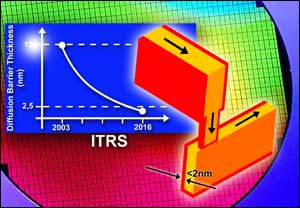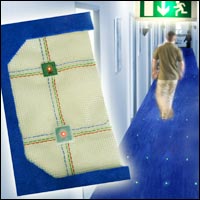Here you can find a summary of innovations in the fields of information and data processing and up-to-date developments on IT equipment and hardware.
This area covers topics such as IT services, IT architectures, IT management and telecommunications.

Milestone to Fulfill Metallization Requirements for Chip Manufacturing into Next Decade
Infineon Technologies (FSE/NYSE: IFX) today announced that its Munich Research Labs have demonstrated, by shrinking present film thicknesses into nanotechnology geometries, that the stringent requirements of thin encapsulation films in metallization schemes of future chip generations will be met. The results shows that thin barrier films, key components for advanced copper chip wiring, will meet t

Speed-up may make “topic-sensitive” page rankings feasible Computer science researchers at Stanford University have developed several new techniques that together may make it possible to calculate Web page rankings as used in the Google search engine up to five times faster. The speed-ups to Google’s method may make it realistic to calculate page rankings personalized for an individual’s interests or customized to a particular topic. The Stanford team includes grad

Ambient intelligence is likely to be a novel concept for many but perhaps others will link it to advances in IC technologies. In fact, ambient intelligence wishes to create active environments capable of adapting at all times to the needs of the end-user. To achieve this aim, techniques based on context aware ubiquitous computing are used.
But, what are the needs of the end-user? And does a handicapped person have the same needs as others? Or an elderly person? The University of the Basque C

Next-Generation, High-bandwidth Memory Architecture Targets Communication Data Storage Applications
Infineon Technologies AG and Micron Technology, Inc., today announced the release of the complete specification for reduced latency DRAM II (RLDRAM™ II) architecture. Operating at speeds of up to 400 MHz, RLDRAM II products are the second-generation, ultra high-speed double data rate (DDR) SDRAM that combines fast random access with extremely high bandwidth and high density targeting co

W3C XML Protocol Working Group Requests Final Review of XML-based solution for Data Transport
The World Wide Web Consortium (W3C) today releases the SOAP Version 1.2 Proposed Recommendation, consisting of the SOAP 1.2 Messaging Framework; SOAP 1.2 Adjuncts, and a Primer. SOAP 1.2 is a lightweight protocol intended for exchanging structured information in a decentralized, distributed environment such as the Web. A W3C Proposed Recommendation is issued after review by the W3C Director,

Researchers from Infineon Technologies AG have developed a way to make large textile surfaces such as carpeting or tent cloth “intelligent”. This technology innovation may lead to new products for the monitoring of buildings, the structural control of buildings of all kinds and for use in the advertising industry.
Woven into fabrics, a self-organizing network of robust chips is able to monitor temperatures, pressures or vibrations as required. In addition to the sensor functionality,